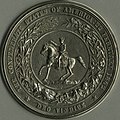
The Confederate States of America (CSA), commonly referred to as the Confederate States (C.S.), the Confederacy, or the South, was an unrecognized breakaway republic in the Southern United States that existed from February 8, 1861, to May 9, 1865. The Confederacy comprised eleven U.S. states that declared secession and warred against the United States during the American Civil War. The states are South Carolina, Mississippi, Florida, Alabama, Georgia, Louisiana, Texas, Virginia, Arkansas, Tennessee, and North Carolina.

The flags of the Confederate States of America have a history of three successive designs during the American Civil War. The flags were known as the "Stars and Bars", used from 1861 to 1863; the "Stainless Banner", used from 1863 to 1865; and the "Blood-Stained Banner", used in 1865 shortly before the Confederacy's dissolution. A rejected national flag design was also used as a battle flag by the Confederate Army and featured in the "Stainless Banner" and "Blood-Stained Banner" designs. Although this design was never a national flag, it is the most commonly recognized symbol of the Confederacy.

The flag of Georgia is the flag of the U.S. state of Georgia. Its current iteration was adopted on February 19, 2003. The flag bears three horizontal stripes and features a blue canton containing a ring of 13 white stars that encircle the state's gold-colored coat of arms. The ring of stars that encompass the state's coat of arms represents Georgia as one of the original Thirteen Colonies.

Harris Flanagin was an American politician and lawyer who served as the 7th governor of Arkansas from 1862 to 1864, and in exile from 1864 to 1865. Prior to this he was a Confederate States Army officer who commanded infantry in the Western Theater of the American Civil War.

The postage stamps and postal system of the Confederate States of America carried the mail of the Confederacy for a brief period in U.S. history. Early in 1861 when South Carolina no longer considered itself part of the Union and demanded that the U.S. Army abandon Fort Sumter, plans for a Confederate postal system were already underway. Indeed, the Confederate Post Office was established on February 21, 1861; and it was not until April 12 that the American Civil War officially began, when the Confederate Army fired upon U.S. soldiers who had refused to abandon the fort. However, the United States Post Office Department continued to handle the mail of the seceded states as usual during the first weeks of the war. It was not until June 1 that the Confederate Post Office took over collection and delivery, now faced with the task of providing postage stamps and mail services for its citizens.

The president of the Confederate States was the head of state and head of government of the Confederate States. The president was the chief executive of the federal government and commander-in-chief of the Confederate Army and Navy.

The Sons of Confederate Veterans (SCV) is an American neo-Confederate nonprofit organization of male descendants of Confederate soldiers that commemorates these ancestors, funds and dedicates monuments to them, and promotes the pseudohistorical Lost Cause ideology and corresponding white supremacy.

The Provisional Congress of the Confederate States, also known as the Provisional Congress of the Confederate States of America, was a unicameral congress of deputies and delegates called together from the Southern States which became the governing body of the Provisional Government of the Confederate States from February 4, 1861, to February 17, 1862. It sat in Montgomery, Alabama, until May 21, 1861, when it adjourned to meet in Richmond, Virginia, on July 20, 1861. In both cities, it met in the existing state capitols which it shared with the respective secessionist state legislatures. It added new members as other states seceded from the Union and directed the election on November 6, 1861, at which a permanent government was elected.

The American Civil War Museum is a multi-site museum in the Greater Richmond Region of central Virginia, dedicated to the history of the American Civil War. The museum operates three sites: The White House of the Confederacy, American Civil War Museum at Historic Tredegar in Richmond, and American Civil War Museum at Appomattox. It maintains a comprehensive collection of artifacts, manuscripts, Confederate books and pamphlets, and photographs.
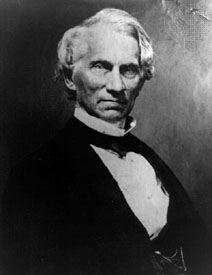
Christopher Gustavus Memminger was a German-born American politician and a secessionist who participated in the formation of the Confederate States government. He was the principal author of the Provisional Constitution (1861), as well as the founder of the Confederate financial system. As the first Confederate States Secretary of the Treasury, Memminger was the principal author of the economic policies of Jefferson Davis's administration.
The Provisional Constitution of the Confederate States, formally the Constitution for the Provisional Government of the Confederate States of America, was an agreement among all seven original states in the Confederate States of America that served as its first constitution. Its drafting by a committee of twelve appointed by the Provisional Congress began on February 5, 1861. The Provisional Constitution was formally adopted on February 8. Government under this constitution was superseded by the new Constitution of the Confederate States with a permanent form of government "organized on the principles of the United States" on February 22, 1862.
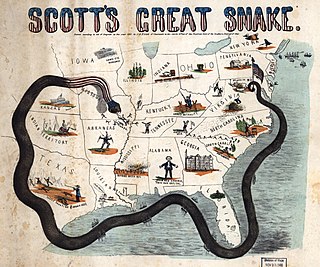
The Union blockade in the American Civil War was a naval strategy by the United States to prevent the Confederacy from trading.

The Southern Cross of Honor was a commemorative medal established in 1899 by the United Daughters of the Confederacy to honor Confederate Veterans.

Major-General Joseph Robert Davis was an American politician and lawyer who served as the commanding general of the Mississippi National Guard from 1888 to 1895. During the American Civil War, he served as aide-de-camp to the President of the Confederate States and commanded a brigade in the Army of Northern Virginia. He is best known for his role at Gettysburg. A member of the Democratic Party, he represented Madison and Scott counties in the Mississippi Senate from 1860 to 1861.
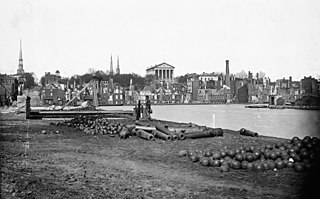
Richmond, Virginia served as the capital of the Confederate States of America during the American Civil War from May 8, 1861, hitherto the capital had been Montgomery, Alabama. Notwithstanding its political status, it was a vital source of weapons and supplies for the war effort, as well as the terminus of five railroads, and as such would have been defended by the Confederate States Army at all costs.

Deo vindice was the national motto of the Confederate States of America. It appears on the margin beneath the device of the Seal of the Confederate States. Never codified by law, Deo vindice was considered the de facto motto of the Confederate States from April 30, 1863, when the Confederate States Congress passed an act, establishing a Seal of the Confederate States. The national motto was first used publicly in 1864.
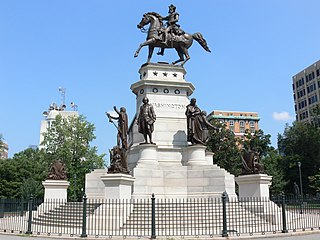
The Virginia Washington Monument, known locally simply as the Washington Monument, is a 19th-century neoclassical statue of George Washington located on the public square in Richmond, Virginia. It was designed by Thomas Crawford (1814-1857) and completed under the supervision of Randolph Rogers (1825-1892) after Crawford's death. It is the terminus for Grace Street. The cornerstone of the monument was laid in 1850 and it became the second equestrian statue of Washington to be unveiled in the United States. It was not completed until 1869.

The General in Chief of the Armies of the Confederate States, or simply General in Chief, was the military commander of the Confederate States Army (CSA) from February to April 1865. The office was effectively abolished on April 9, 1865, when General Robert E. Lee surrendered to the Federal forces at Appomattox, Virginia. Despite being the General in chief, the title defined a role rather than making Lee something that could be called the highest ranking Confederate general officer; the seven full generals of the CSA were delineated solely by seniority, topped by General Samuel Cooper.

This article is a list of national symbols of the Confederate States of America enacted through legislation. Upon its independence on February 8, 1861, and subsequent foundation of the permanent government on February 22, 1862, the Confederate States Congress adopted national symbols distinct from those of the United States.




